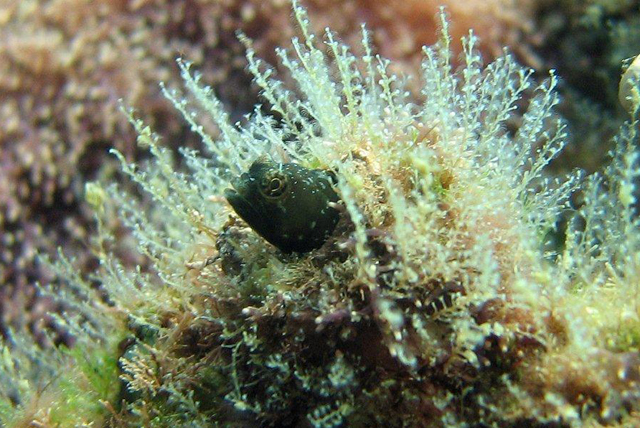| Chaenopsidae (Pike-, tube- and flagblennies) |
| 3.3 cm SL (male/unsexed) |
|
reef-associated; marine; depth range 2 - 8 m |
| Western Atlantic: endemic to Brazil (occurrence in other countries refer to other species). |
|
Dorsal spines (total): 20-21; Dorsal soft rays (total): 11-13; Anal spines: 2-2; Anal soft rays: 20-22. This species is distinguished by the following characters: TP territorial males found in holes with a black head, with a dorsal overlay of small white spots; anterior dorsal fin blackened with a distal red band over a narrow white band and a thin white margin; the first dorsal-fin spine very long, when adpressed, reaching to 7th-11th spine base, about equal or well more than HL, the second spine often about 1/2-2/3 of first, the third spine about 1/3-1/2 of first, tenth spine up to 1/2 of first, the profile of anterior dorsal fin with a deep concavity (Ref. 125603).
Dark-shaded and pale TP with a similarly long first dorsal-fin spine and red band, with dark spots usually present along proximal spinous-dorsal-fin membranes forming a single row, no opercular bands or lines nor a row of dark spots along lateral midline or above lateral midline (Ref. 125603).
IP with elongated first two dorsal-fin spines, when adpressed, the first spine reaching to base of 5th-7th spine base, the second slightly shorter, third 1/2 of first (earlier IP and juvenile with less elongate spines). Colouration: live colors red, orange, and pink, but often brown and green (on darker backgrounds); cranial pattern with all bands prominent, pale bluish white or red, then breaking up, especially bands 2 and 3, forming a reticulated mosaic; IP head spots often full complement; melanophores near pectoral-fin base one to three spots (Ref. 125603). |
| Minimum depth range documented from Santa Catarina, South Brazil (S.Floeter, pers.comm. 04/10). |
|
Least Concern (LC); Date assessed: 04 February 2009 Ref. (130435)
|
| harmless |
Source and more info: www.fishbase.org. For personal, classroom, and other internal use only. Not for publication.

